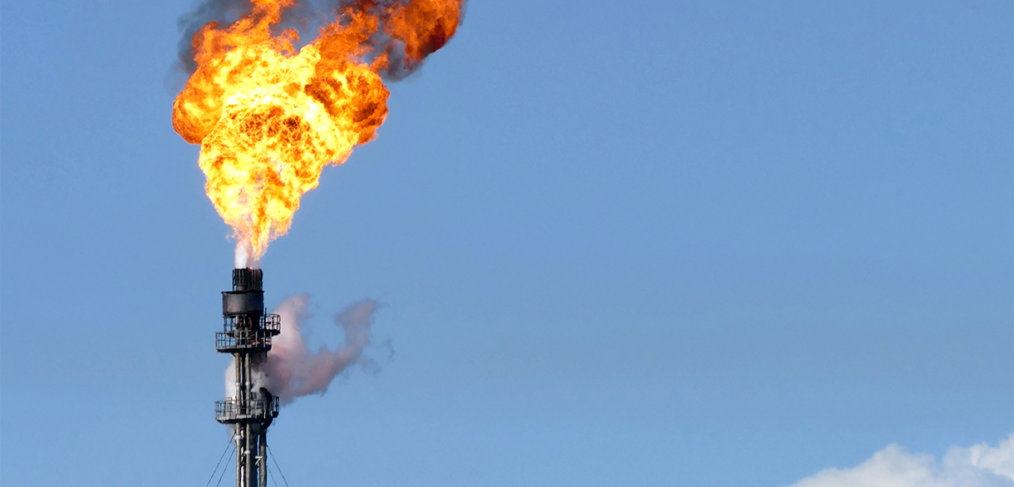
PRESS BRIEFING on the EU Methane Regulation
I. Background
The climate killer methane
- Second most important greenhouse gas, concentration in the atmosphere currently higher than at any time since measurements began. Short lifespan: after about 12 years, methane is broken down into carbon dioxide (CO2), but calculated over a period of 20 years, methane is 80 times more harmful to the climate than CO2.
- According to the most recent synthesis report by the Intergovernmental Panel on Climate Change (IPCC), the goal of limiting global warming to 1.5 degrees Celsius can only be achieved with measures to reduce methane. Halving methane emissions by 2030 can reduce the global average temperature rise by 0.3 degrees Celsius.
- No more excuses: In the energy sector, 75 percent of methane emissions can be reduced at no additional cost.
- More than half (59%) of the world’s methane emissions are man-made: agriculture (approx. 45-50%), waste management (25%) and the energy sector (25-30%). For Europe, the sectoral breakdown is slightly different, with 53% agriculture, 26% waste management and 19% energy. Methane emissions from the energy sector in the EU amounted to 3.1 million tonnes in 2021.
EU-Methane Regulation:
- To this day – more than 20 years after the EU Commission’s first methane strategy – there is no regulation of methane in the EU; EU methane strategy was announced in Green Deal, published in 2020. The EU Parliament’s Initiative Report on the Methane Strategy already called for all sectors to be addressed and for imports to be included.
- Achieving the EU climate target also requires a reduction in methane. Methane emissions are not addressed in the Emissions Trading Scheme, but fall under the EU Effort Sharing Regulation.
- On the initiative of the EU, among others, more than 100 countries agreed to join the Global Methane Pledge at the UN climate conferences in 2021 and 2022: goal of reducing methane by at least 30 percent by 2030.
- In terms of global impact, the EU Methane Regulation could become the most far-reaching EU climate law in the Green Deal
- Methane is responsible for 24% of global warming and is a precursor to ozone formation. This makes methane not only a problem for the climate but also an environmental and health problem.
Positions of the negotiating partners:
- European Commission: overall good proposal, but only includes measures for the energy sector.
- Council of Member States: Close to industry position, Council position severely watered down Commission proposal. Unusually clear criticism from Energy Commissioner Simson: „[…] The changes […] represent a substantial reduction in ambition, and therefore could prevent us from achieving effective reductions of methane emissions already in the short term. It is important that the legislation that we adopt on methane abatement does not put us behind many of our energy partners, and also behind what market operators are already doing today in terms of industry best practices to control their methane emissions.”
Schedule EU Methane Regulation:
- Vote in ENVI and ITRE Committees: Wednesday 26 April, 14:30-15:15
- Vote in the plenary session of the European Parliament in the week of 8-11 May
- Then start of trilogue negotiations between Parliament, Council and Commission
II. Situation in the European Parliament
Central demands:
- Imports: The parliamentary proposal extends the measures proposed by the Commission to the entire supply chain of fossil imports. The EU imports more than 4/5 of its gas and oil needs and 2/5 of its coal needs. Without the extension to imports, the EU Methane Ordinance is ineffective.
- Ban on Methane Venting and Flaring: Routine venting and flaring will be prohibited. Parliament’s position strengthens the Commission’s proposal and calls for a 99% efficiency target. Leaks must be found, reported and closed. The role model here is Norway, which, due to methane legislation and taxation, has a methane intensity of its production of just 0.02 percent (EU average: 0.2 percent).
- Methane reduction target: Parliament calls on the Commission to present a proposal for a clear methane reduction target for all sectors concerned by 2025.
- Coal: Limit of a maximum of 5 tons of methane emissions per 1000 tons of coal production from 2027 and a maximum of 3 tons from 2031. This gives Poland more time to implement, which historically and socially is in a more difficult starting position.
- Closed and Abandoned Coal Mines: Parliament calls on the Commission to present a Delegated Act on coking coal. Member States must map abandoned mines and adopt a methane reduction timetable within three years.
- Extension to the petrochemical sector: In addition to the gas, coal and oil sectors, Parliament is also calling for petrochemicals to be included in the EU methane regulation. Reason: essentially the same technologies and devices are used in the chemical industry as in the oil and gas industry. With the decline in the use of oil and gas as an energy source, the share of petrochemicals in the consumption of fossil fuels will increase.
Political Assessment
- Broad, cross-party and full support for the parliamentary position (exception: extreme right-wing ID party); Die LINKE does not support the compromise on coal.
- Win-win for energy sovereignty and climate protection: With the parliamentary proposal, 75% of the EU methane emissions in the energy sector – 2.33 million tons – could be avoided. This corresponds to about 3.2 billion cubic meters or approximately the gas consumption of the Netherlands.
- If the EU Methane Regulation were also applied to imports into the EU, this would reduce 400 million tonnes of CO2 equivalent annually, equivalent to two thirds of Germany’s emissions.
- Money is not the problem: 3% of the oil and gas industry’s annual profit would be enough to avoid 80% of emissions.
